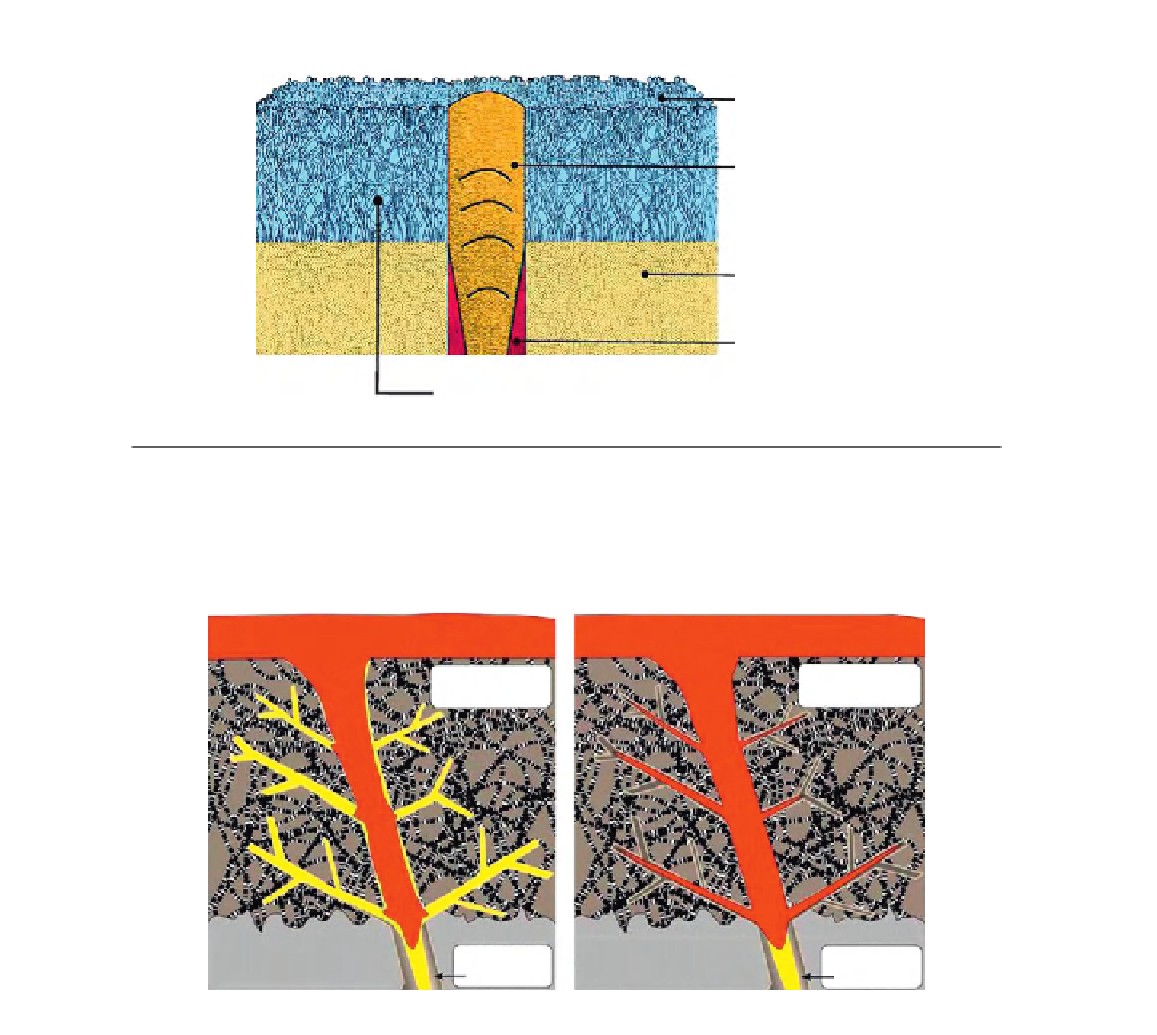Biomedical Engineering Reference
In-Depth Information
5-8
µ
m thick
demineralized
collagen matrix
Dentinal tubule
Mineralized
intertubular dentin
Peritubular dentin
Highly cross-linked type-I collagen
FIGURE 7.5
Schematic of a hybrid layer (HL) created by an etch-and-rinse adhesive. Note that the depth of the hybrid
layer (green) is about four acid-etched tubule diameters (i.e. ca. 8
m). The collagen fibrils in the HL are
continuous with the underlying mineralized matrix. A single dentinal tubule is shown devoid of a resin tag to
illustrate its presence. (For interpretation of the references to color in this figure legend, the reader is referred
to the web version of this topic.)
µ
(A)
(B)
Poorly hybridized
resin tag
Perfectly hybridized
resin tag
Demineralized
dentin matrix
Demineralized
dentin matrix
Peritubular
dentin
Peritubular
dentin
Mineralized front
Mineralized front
FIGURE 7.6
Schematic of micropermeability of (A) poorly hybridized resin tags in etched dentin saturated with water prior
to resin infiltration versus (B) perfectly hybridized resin tags in etched dentin saturated with ethanol prior to
resin infiltration. Yellow fluorescent tracer was forced from the pulp chamber, out the tubules toward the
hybrid layer. In (A) the resin could not displace water-filled lateral branches of tubules in the hybrid layer. This
allowed yellow tracer to diffuse throughout the hybrid layer. In (B) the resin easily dissolved in the ethanol-
filled lateral branches sealing the hybrid layer from dentinal fluid.

